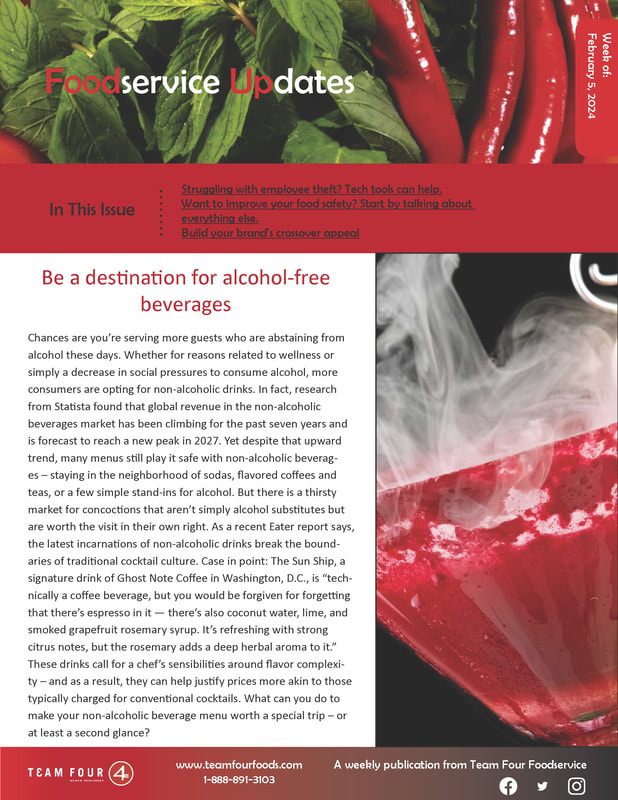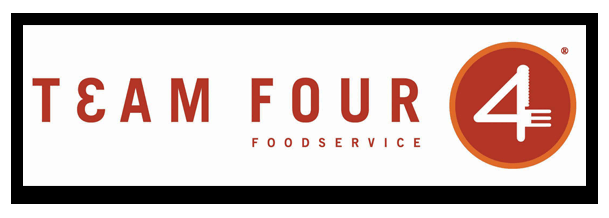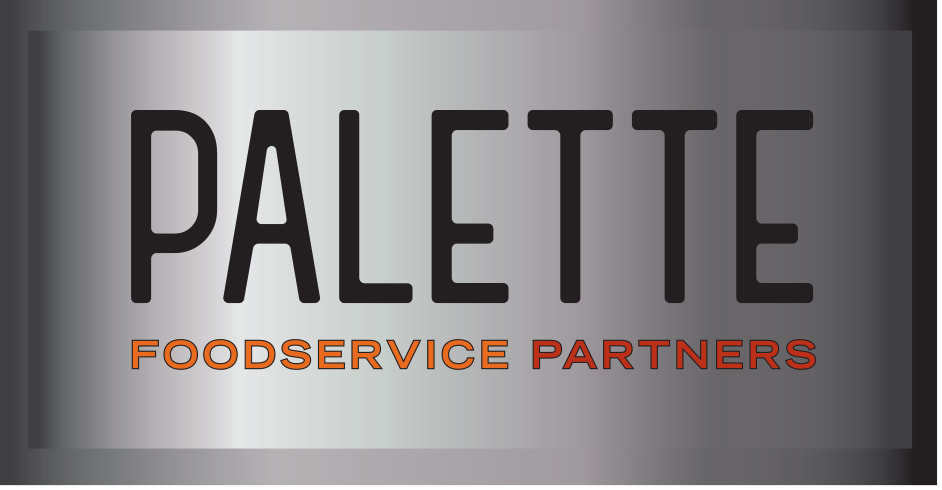 If your state is among the many that have experienced major heatwaves so far this year, take note of a new rule in California that may gain traction in other states. The state’s Occupational Safety and Health Standards Board recently approved a standard on heat exposure that impacts indoor workplaces. As Restaurant Dive explains, employers who are covered by the new rule must provide their workers with access to clean drinking water and cool-down areas that are located away from radiant heat sources, where workers can sit without touching each other, and where the air temperature is below 82 degrees, unless employers can demonstrate this isn’t workable. It’s worth noting that workplace demonstrations protesting high kitchen temperatures have occurred in a number of states around the country. Free access to water, adequate air conditioning, and protective equipment that keeps workers cooler can all help improve conditions for workers – both in protecting your restaurant’s business culture as well as its food safety.  Your kitchen and discarded waste can be magnets for flies and other pests in the summer. While pesticides can get rid of pests in your business, they’re really just a temporary solution – particularly if you don’t eliminate the reason they are attracted to your facility and their ability to enter it. Your food safety culture plays an important role here. The investments you make in this area can help you avoid having to spend continuously on a pest management program. Putting in the time and effort to protect your sanitation day to day is critical. That includes ensuring your team isn’t giving pests easy points of entry into your facility and that they’re cleaning surfaces and equipment deeply enough, even when it seems there isn’t enough time to do it. Food Safety Magazine advises businesses to define responsibilities around integrated pest management in their facility and develop SMART goals for staff to uphold them. Discuss pest management in meetings and review and recommendations from your pest control company with them. Train them to identify ways to make ongoing improvements and empower them to respond, so a minor slip-up doesn’t have a chance to balloon into an infestation.  Food allergies affect nearly 11 percent of adults and 8 percent of children, sending 200,000 people to the hospital in the U.S. each year. As a result, chances are good that every day, you’re having to respond to guest questions and concerns about allergens in your menu items. Being able to do this during busy shifts, smoothly and without creating bottlenecks, requires tools that allow your staff to have access to allergen information at their fingertips so they can steer guests toward foods that are safer for them. As a recent report from Modern Restaurant Management explains, restaurants can accomplish this with an up-to-date POS that is connected with their kitchen and can show real-time information about food allergens based on the menu items being offered in that moment. Combine this with payment technologies that allow the guest to input information about their allergies up front, thereby immediately omitting any menu items that could be problematic for them, and restaurants can significantly reduce their potential “points of failure” around food allergies. Doing so isn’t just the right thing to do – it’s also good for business, considering that food allergy sufferers are a loyal group. When you can provide a meal that is safe and enjoyable for a guest, they are apt to favor your restaurant in the future and recommend it to others who struggle with allergies as well.  That may not necessarily be the case. Food safety regulators often have stories about finding health and safety hazards in restaurants known for having strong safety cultures. Food safety consultant Francine Shaw experienced one recently while visiting a restaurant brand known for its food safety: She used the restroom and found that the sink wasn’t working, then reported it to an employee who shrugged in response. Unfortunately, all it takes is one understaffed store, or one employee who doesn’t take their responsibility to protecting safety seriously, to threaten the safety record of a business. So what can operators do? Developing and maintaining a culture committed to safety is a process that starts at the top of the business, trickles down to all employees and needs ongoing reinforcement. It helps to develop and benchmark training programs that can keep track of training progress and areas for improvement. Understand what tools and people the team needs to protect safety. (Technology can be a useful aid here but it shouldn’t be a crutch or a replacement for knowing how to protect the safety of the business.) Adopt the mindset of a regulator when assessing your food safety standards. Where might there be pitfalls that could threaten your safety record?  The restaurant business can be difficult to predict: A sick employee, a piece of key equipment in disrepair, or weather conditions that result in a long line out your door can quickly turn a seemingly routine day into a unmanageable one. When this happens, it’s only natural to switch into a different gear where you’re putting out fires – taking on some extra tasks here or skipping some safety checks there just to keep up with what’s happening in the moment. But this can cause a ripple effect that’s difficult to reverse. Specifically, what happens to your procedures when conditions settle down and your operation seems to be flowing as it should? Junior members of the team who have observed the restaurant in fire-fighting mode now know there are some tasks that can be skipped if need be. So do they really need to be done as regularly as they were initially told? Being in fire-fighting mode on a regular basis can erode your management’s credibility and lead to a decline in food safety. To stop repeating the pattern, it can help to take a step back and assess how often you’re short on staff, having audits or inspections, or otherwise having to scramble to dig yourself out of challenging situations. Understand where you’re slipping so you can build a backup plan to ensure you’re still upholding your food safety procedures, identify tools or automations that might support you, and ask for help from your team and upper management.  In a recent podcast with Food Safety Magazine, food safety expert Francine Shaw said she has pulled up to restaurant drive-thrus and received food from employees wearing cleaning gloves, as well as seen restaurant staff push trash down into a bin with a gloved hand. It may sound disgusting, but it’s also understandable: If these restaurant employees had been using their bare hands, they probably would have realized they were putting food safety at risk, or at least experienced a major “ick” factor that reminded them to wash their hands. But gloves can give a person a false sense of security, as well as create a sensory barrier that makes it easier to overlook a food safety risk. Looking at your business, how well does your team follow protocols around handwashing and gloves? Do they ensure their hands are clean when they put on a new pair? Do you see people wearing multiple pairs at once? Do they understand that the gloves are there to protect guests and not the wearer? It may be helpful to review your training protocols around gloves so that they can best support your food safety and not bring new risks into it. A refresher could be especially important if you’re serving more food offsite this summer and employees’ access to handwashing sinks looks different than it does on your premises.  If your restaurant is slipping up on food safety – or simply has areas where it can perform even better – it’s possible your team may not necessarily see the connection between what they do each day and the impacts on the health and safety of your guests. This isn’t just about the people preparing your food. It’s about people at every level of your organization who play a role in delivering the best possible experience for guests – even if they don’t know it. For example, the complex tasks your kitchen has to complete tend to carry greater risk. They’re more difficult to get right. Making these tasks simpler and easier may require looking at them in a different way. Your connections and partnerships with other parts of your operation can be helpful here in making positive changes. Involving partners from the beginning and as a regular part of the job can make them more invested in food safety as foundational to the overall success of the business – not something that is layered on top as extra information that needs to be learned and applied by a select group. In a recent webinar from Food Safety Magazine, Steven Lyon, director of food safety at Chick-fil-A, shared an example of how such connections can be helpful: He said that Chick-fil-A is the world’s No. 2 buyer of lemons, after Walmart. Team members used to hand-squeeze every lemon, handling 50 cases of lemons a day – not a great experience for team members and a burden on operational storage space. But the team came up with the idea of transitioning to high-pressure-process lemon juice to ease those strains – and over the course of a multi-year period, they were able to get buy-in across the business about the value of the change. Where might your business benefit – in safety, costs savings or other areas – from gathering the input and buy-in of people across your operation?  The FDA is considering cutting funding for state food inspections, which currently total about 5,700 – a large portion of the country’s food safety audits. This comes at a time when foodborne illness outbreaks are an ongoing threat. According to the Centers for Disease Control and Prevention, there were 12 multi-state outbreaks in the U.S. in 2022, nine in 2023, and four in the first four months of 2024. Third-party inspections can and do help businesses identify risks and make corrections before they balloon into larger problems. In the meantime, foodservice operations may have to take some steps on their own to manage their role in protecting against foodborne illness, including shrinking and closely managing the food supply chain and securing relationships with suppliers who are committed to protecting food safety and have systems in place to identify risks and alert businesses to them in real time.  We all know it’s important to wash our hands – and chances are good that people on your team aren’t consciously walking around with contaminated hands. Yet in a demanding, fast-paced foodservice environment, it can be easy for handwashing to happen less frequently and less thoroughly than it should. But it’s so important: According to the Centers for Disease Control and Prevention, one million deaths each year could be prevented if everyone routinely washed their hands – and a large percentage of foodborne disease outbreaks are spread by contaminated hands. Fortunately, technology is taking human error out of the equation for food safety tasks, to include handwashing. One case in point is the Handscanner, a device from PathSpot that is being dubbed the “handwashing lie detector.” The small device can be wall-mounted next to a handwashing sink. After a worker washes their hands with soap and water, then dries them with a paper towel, they place their hands under the scanner. Within a couple of seconds, the device uses non-UV LED imaging technology to identify residual contaminants on hands and wrists. The technology, which is used in healthcare settings, is able to detect contamination in hard-to-clean areas like under fingernails and around jewelry. It is already in use in 10,000 foodservice locations worldwide, including franchised Taco Bell, Arby’s and Chopt restaurants.  Businesses across the foodservice industry’s supply chain face some changes under the FDA’s Food Traceability Rule (also known as Food Safety Modernization Act Section 204). The new regulation is intended to help businesses quickly identify and remove potentially contaminated foods from the food supply chain. While the change tends to focus more on food processors, distributors and other businesses operating higher up in the supply chain, restaurant operators should also be aware of any actions they will have to take between now and the January 2026 implementation deadline to ensure compliance. Specifically, restaurants that carry foods from the traceability list – food items ranging from cheeses to leafy greens that are more often implicated in food illness outbreaks – will have to meet specific record-keeping requirements. The National Restaurant Association’s website offers some resources to help operators determine if they will have to follow the traceability rule once it goes into effect, and what steps they should take in the coming months to prepare their businesses to comply if so. |
subscribe to our newsletterArchives
July 2024
Categories
All
|



 RSS Feed
RSS Feed